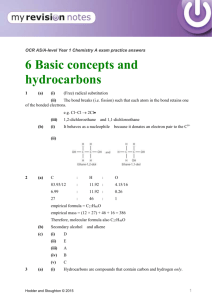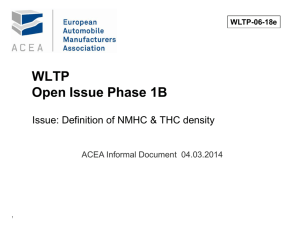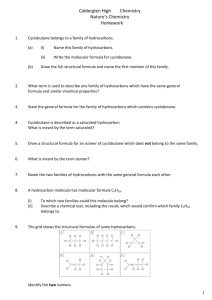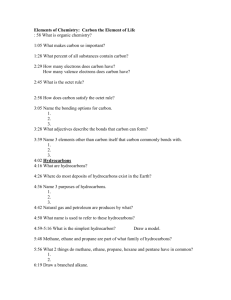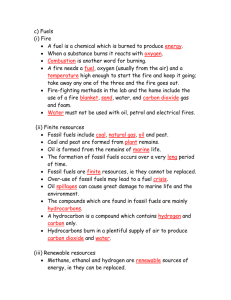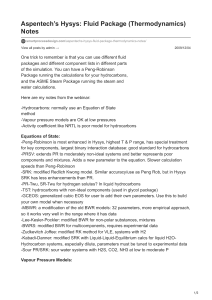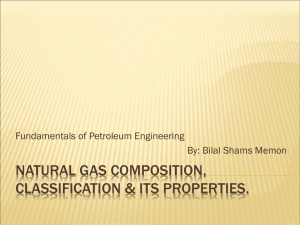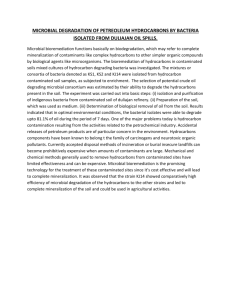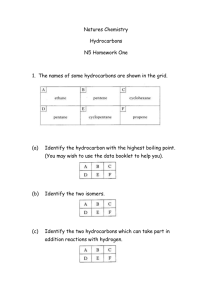Exam practice answers 4
advertisement
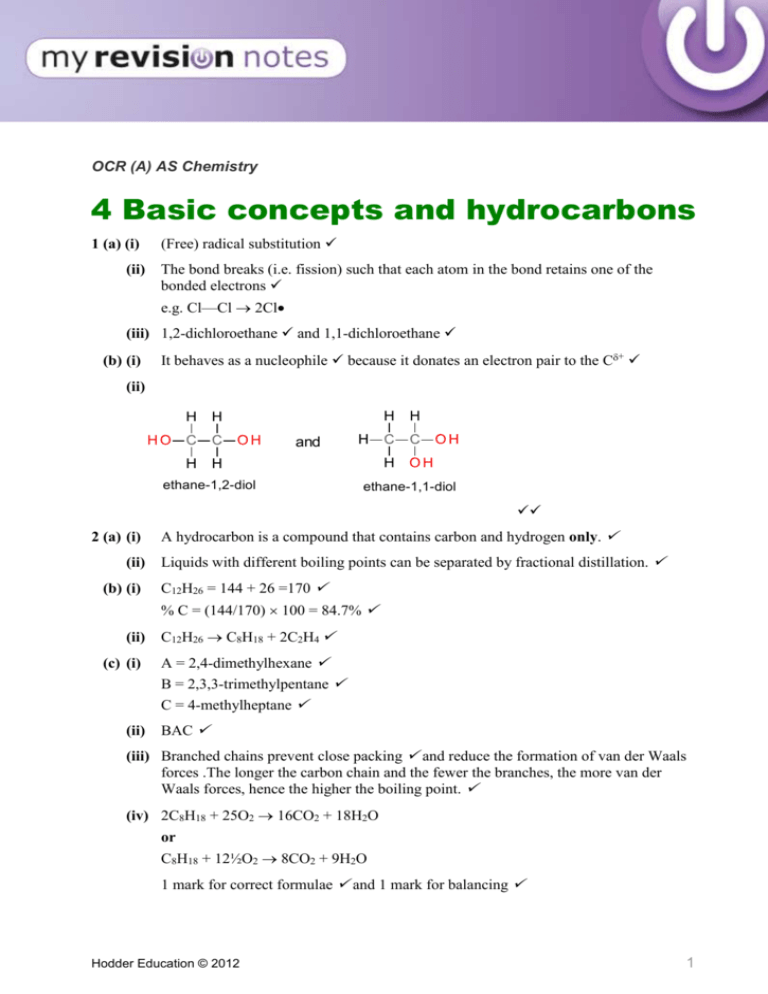
OCR (A) AS Chemistry 4 Basic concepts and hydrocarbons 1 (a) (i) (ii) (Free) radical substitution The bond breaks (i.e. fission) such that each atom in the bond retains one of the bonded electrons e.g. Cl—Cl 2Cl (iii) 1,2-dichloroethane and 1,1-dichloroethane (b) (i) It behaves as a nucleophile because it donates an electron pair to the C+ (ii) and ethane-1,2-diol ethane-1,1-diol 2 (a) (i) (ii) (b) (i) A hydrocarbon is a compound that contains carbon and hydrogen only. Liquids with different boiling points can be separated by fractional distillation. C12H26 = 144 + 26 =170 % C = (144/170) 100 = 84.7% (ii) (c) (i) (ii) C12H26 C8H18 + 2C2H4 A = 2,4-dimethylhexane B = 2,3,3-trimethylpentane C = 4-methylheptane BAC (iii) Branched chains prevent close packing and reduce the formation of van der Waals forces .The longer the carbon chain and the fewer the branches, the more van der Waals forces, hence the higher the boiling point. (iv) 2C8H18 + 25O2 16CO2 + 18H2O or C8H18 + 12½O2 8CO2 + 9H2O 1 mark for correct formulae and 1 mark for balancing Hodder Education © 2012 1 (v) Any of: used as additives in petrol to increase the octane rating/burn more smoothly/reduce knocking/less viscous/ more volatile. 3 There are three processes — cracking, isomerisation and reforming — and each requires: an explanation an equation a statement as to their importance It is possible to write the answer out in prose but probably easier using either bullet points or a table. Explanation Cracking Cracking is used to break down longchain hydrocarbons into shorter-chain hydrocarbons and alkenes. High temperature and a catalyst are used. Equation C10H22 C8H18 + C2H4 Isomerisation Isomerisation is used to convert straightchain hydrocarbons into branched-chain hydrocarbons. Industrial importance Shorter-chain hydrocarbons are more volatile, less viscous and are more efficient fuels. * Alkenes are used in the petrochemical industry for producing polymers, alcohols and many other essential chemicals. The branched-chain hydrocarbons are added to petrol and increase the octane rating because they are more volatile, less viscous and are more efficient fuels.* or any other branched isomer Reforming Reforming is the conversion of chain hydrocarbons into ring hydrocarbons. or a cyclic diene + 3H2 Ring compounds are also added to petrol because they are more volatile, less viscous and burn more efficiently. * or benzene + 4H2 * mark awarded only once Hodder Education © 2012 2
